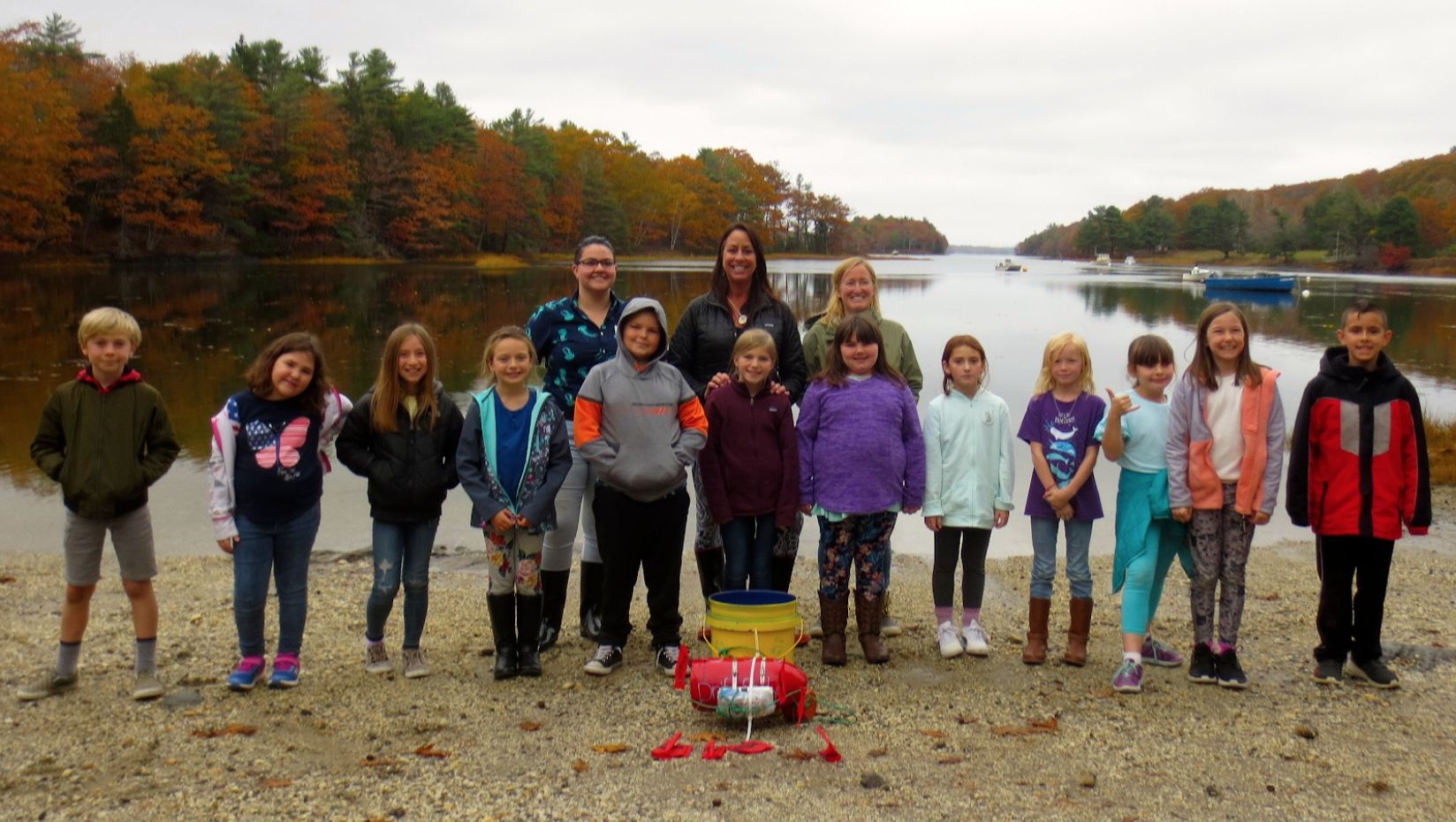
Elementary students put UMaine clamming research to the test
Gabrielle Hillyer, a Master’s student in oceanography and marine policy, is putting her marine science education into practice by researching water quality issues within the Gulf of Maine in the hopes to improve the solvency of the soft-shell clamming industry.
Hillyer studies the impact of bacteria in mudflats on the Medomak River in Waldoboro, Maine with Damian Brady, associate professor of marine science, and Bridie McGreavy, assistant professor of environmental communication, with funding support from the UMS Research Reinvestment Fund and the Diana Davis Spencer Fellowship.
Before this project, Hillyer worked collaboratively with clammers in the area, like commercial clammer Glen Melvin, to gain as much knowledge as possible in her interests of study.
Some bacteria can negatively impact clamming activity – at times closing clam flats for up to nine days when there is over an inch of rainfall. This leads to surrounding areas of this water body being closed off to licensed shellfish harvesters and resulting in a decline of income in the shellfish industry.
Hillyer designed the Bucket Drifter, which is used to measure the tides and understand an estuary’s ability to get rid of this harmful bacteria. Sets of these drifters have been deployed over 25 times and can help track point sources of pollution, as well as measure temperature, salinity, light intensity, and pH.
She has taken the project one step further by giving back to the community. On October 29, 2019, she spent her time at Georgetown Central School to help fourth graders build and deploy their own drifter bucket.
Hillyer was excited to see the efforts the research team made in the Medomak region slowly spread. She saw young children learning about her research and implementing it into an experiment of their own. They learned about the effect of bacteria on clam flats, as well as the effect of currents and tides.
“It was so rewarding to work with Georgetown Central, Susan Ayers, and Marissa McMahan on coordinating this field day,” says Hillyer. “I was thoroughly impressed with the knowledge and tenacity many of the students showed during my short time with them. I hope in the future to have more schools and young students involved with ongoing scientific efforts to help clamming communities across the coast preserve and support this foundational industry.”
Author: Cat Caragine
Media Contact: Christel Peters, 207.581.3571
Related Stories:
Hillyer studies Medomak river estuary and impacts on clamming community
